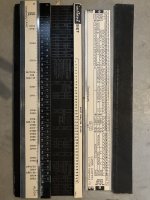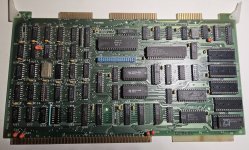NeXT
Veteran Member
"Dial-an-ohm".
| VCF West | Aug 01 - 02 2025, | CHM, Mountain View, CA |
| VCF Midwest | Sep 13 - 14 2025, | Schaumburg, IL |
| VCF Montreal | Jan 24 - 25, 2026, | RMC Saint Jean, Montreal, Canada |
| VCF SoCal | Feb 14 - 15, 2026, | Hotel Fera, Orange CA |
| VCF Southwest | May 29 - 31, 2026, | Westin Dallas Fort Worth Airport |
| VCF Southeast | June, 2026 | Atlanta, GA |

Andhere's my guess....
Made me laugh.This is obviously
And since nobody here knows any better, I guess I win!!!
Thanks guys, I’m finally getting some more info on this item.And since nobody here knows any better, I guess I win!!!
The 8-bit/6-bit word mapping is a clue to TTY (5 and 7 level), but the "Shift Register" notation had me puzzled.This is obviously a tool to help manually decode/debug teletype-like serial messages for a US Army intra-departmental supply ordering system (USAIDSOS, unofficially known as "You Said Help?") tested briefly in the 1960's. It cost the taxpayers $142.8 MIL USD at the time, and was scraped and replaced by a much more complex and less robust system before it was ever fully deployed.
Well then tell us:
What do you have hanging around now?
What are some of the coolest turn-ins you have seen?

Looks like a multibus CPU card. Doubtless most of the RAM resides on a different card.
What does the other side of the board look like?
something 9 track related. that is the order of the tracks on a tapeI think this is IBM, possibly System 3 something, but haven't found a match to confirm exactly.
The switch nuts have all been removed to disassemble it.
View attachment 1290656View attachment 1290658View attachment 1290657
Yup. Data is inverted on the bus.Does Multibus use inverted bus signaling?
